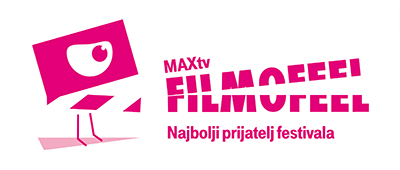I don’t take filmmaking as seriously as male directors do. I simply love shooting films- shooting’s the greatest experience I’ve had in my life. This statement made by Márta Mészáros in 1977 is in stark contrast to the critical surveys of her work in film, mostly focused as they are on thematic readings in mimetic key, with a pronounced emphasis on tendentious interpretation of political, cultural, social and gender issues portrayed. To the detriment of precisely that crucial dimension – i.e. film form – which makes these films the work of Márta Mészáros, who is, just like many of her heroines (e.g. in films Eltávozott nap / The Girl, 1968; Szabad lélegzet / Riddance aka Free Breathing, 1973; Örökbefogadás / Adoption, 1975; Kilenc hónap / Nine Months, 1976 etc.) constantly at odds with all sorts of received opinion, aesthetic conventions and poetic prescriptions, including those specifying what kind of films female directors ought to be making, the ones from the so-called Eastern Europe in particular. The film Szerencsés lányai (Daughters of Fortune, 1998) was characteristically denounced for failing to present the subject of a Russian prostitute in contemporary Warsaw in a manner deemed suitable to it: the rigorously documentary mode of the opening soon turns into a masterful erotic fantasy. Mészáros was forced to point out the obvious: such portrayal was necessary, because that is the protagonist’s work, just as I portray women at their machines in my films with a factory setting. The social or political thrust of the films of Márta Mészáros is never to be found in what is being shown, for it always lies where prescriptive criticism refuses to look for it – in the feedback that obtains between truth and lies, in its turn created by the exploration of the conditions of possibility of showing itself.
It is therefore not surprising that on the occasion of the Canadian coproduction Bye Bye Chaperon Rouge (Bye Bye, Red Riding Hood, 1989) she should voice her relief for having for once been set free of the habitually imposed political responsibility and being able to indulge in pure fantasy, fully aware that as far as film is concerned it is no less real than the documentary footage of the actress Lila Monari giving birth, which she incorporated into Nine Months. It is precisely the indissoluble link of the documentary and the fictional that is foregrounded in a series of diary films – Napló gyermekeimnek / Diary for My Children (1982); Napló szerelmeimnek / Diary for My Lovers (1987); Napló apamnak, anyamnak / Diary for My Father and Mother (1990); Kisvilma: Az utolsó napló / Little Vilma: The Last Diary (2000) – in which autobiographical motifs (Juli, the protagonist of Diary for My Lovers, for instance, studies film directing at Moscow’s VGIK, from which Mészáros herself graduated in 1956) and faithful cultural and historical details are presented by means of a nuanced visual texture (black and white in the first two, and in colour in the latter ones), with narrative self-awareness – Mészáros likens her procedure directly to a saga, a family novel in literature, where the stories continue, the characters return after certain changes, enriched or burdened with historic and private experiences – becoming ever more complex displaying the redeeming power of cinematic fiction.
In the course of her exceptionally long and successful career, which includes several works that surely belong among the most distinguished in the history of cinema, and in which not only actresses – like Marina Vlady (Ők ketten / The Two of Them aka Women, 1977), Anna Karina (Olyan, mint otthon / Just Like Home, 1978), Delphine Seyrig (Útközben / On the Move, 1979) or Isabelle Huppert (Örökség / The Heiress, 1980) – but also her long time partner Jan Nowicki (Diary for My Children; Diary for My Lovers; Diary for My Father and Mother; A magzat / Foetus, 1994; A temetetlen halott / The Unburied Man, 2004, among others) – often gave some of their best performances, Márta Mészáros repeatedly demonstrated her complete creative emancipation, using most diverse, even disparate, formal procedures. In her study, Catherine Portuges rightly calls attention to her integrity of vision, consistent mastery of ambiguous and complex emotions, rigorous refusal of sentimentality and overstatement, equally displayed on the plane of content, in the portrayal of critical intimate situations, and on the plane of expression, by means of habitual introduction of characters or images not readily integrated into the apparent plot, and in particular in the regularly open endings. The function of the interrelation of close-ups and details (frequently, parts of the body) – the hallmark of her style just as the long-shots of her former husband Miklós Jancsó are of his – is specifically to continually demonstrate that the dialectical relationship between the showing and the shown always of necessity sublates the oppositions of which it consists in order to become something more – namely, a film.
Tomislav Brlek




